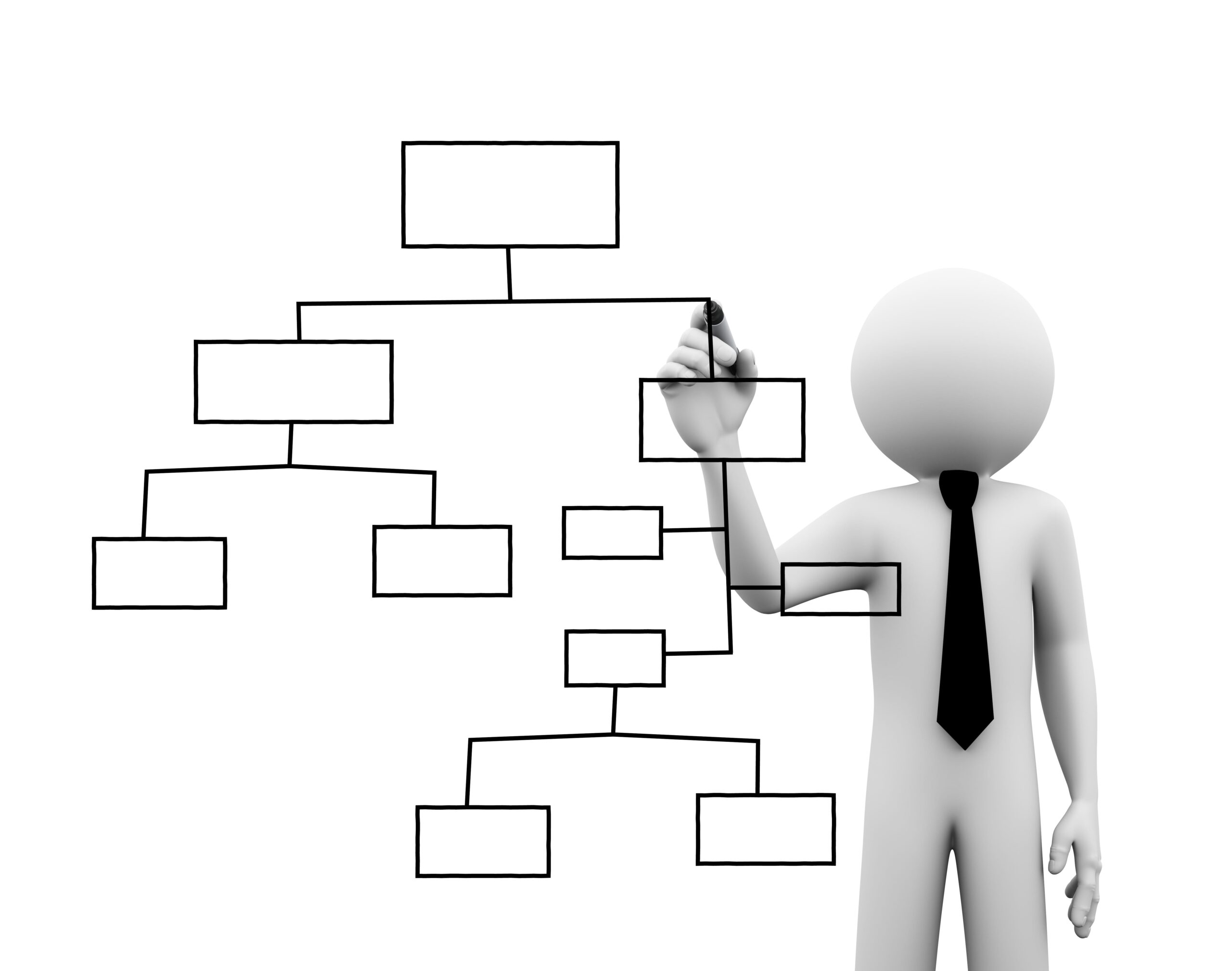Years ago I toted around an 11×17 double-sided sheet of paper like it was my third arm – a source of endless mirth for my executives. Yet this org chart with 300+ names was a lifeline for me as CEO of a fast-growing software company. It helped me maintain a handle on our growth and requirements as we constantly adjusted our organizational structure to fit our personnel and business needs.
With today’s flatter hierarchies and multi-disciplinary teams guided by “need it now” and “fail fast” mentalities, is the humble org chart still relevant? The answer is yes. Fostering creativity, innovation, and growth at speed requires management discipline and – done right – the organizational chart can be a powerful leadership tool.
Here are four reasons to reanimate the organizational chart and keep it alive:
1) Reinforces the mission.
Despite the hype around flat management structures, CEOs must ensure that every employee: 1) has a specific job role; 2) a direct supervisor; and 3) knows how his or her day-to-day work supports the overall company mission and objectives. With these three as a foundation, a clear and current organizational chart helps employees understand the overall company structure and how everyone else contributes to the whole.
If the CEO has communicated a well-defined vision and aligned everyone around it, the org chart can be a rallying point. Employees know each person’s area of responsibility and who to contact if they have a question or need help. The tool becomes a uniter, not a divider.
2) Facilitates good decision-making from the top down.
One of a CEO’s top responsibilities is to make good decisions. High-performing CEOs decide with speed and conviction, according to a study by the CEO Genome Project. The org chart expedites informed decision-making by depicting many issues, such as gaps in critical roles or an inefficient allocation of resources.
For example, my team and I consulted our org chart to help decide who should head up a new project or who had spare capacity to lend a hand. In addition, it showed me where we had too much hierarchy. I could see supervisors who had too many direct reports for effective management and take action to create a more agile organization.
3) Facilitates good decision-making from the bottom up.
I am a firm believer in empowering decision-making at the lowest level possible, which starts with aligning everyone around that common vision, mission, and goals. The org chart helps train employees to make good decisions in line with company strategy. Employees are often torn between making a decision themselves and consulting their boss.
The organizational chart offers an at-a-glance answer. Any issue that has implications beyond an employee’s piece of the org chart – to the people adjacent to or above them – warrants a consultative decision-making process. For example, a marketing specialist should not make a decision that commits a customer care representative to do something he or she hasn’t agreed to do.
In addition, employees should never punt a decision up the org chart that affects only the people below them. They must take responsibility for decisions within their area of expertise and authority. For instance, asking the CEO about the layout of the company’s business cards or which snacks to stock in the kitchen should be nonstarters.
4) Teaches employees when to escalate decisions.
One of the most difficult behaviors to teach employees, managers, and even executives is how to quickly escalate decisions to the right person. Yet this is critical, especially in fast-growing organizations. Here again, a clear org chart – ideally with written job responsibilities – proves valuable.
To refer a decision to the appropriate person, employees should understand which role has responsibility for the full scale of the issue. If a decision impacts multiple groups, employees should move up the org chart to find the leader responsible for all the various groups. For example, a sales associate should not unilaterally choose a new CRM software suite that affects the marketing team, the customer service group, and other people in sales.
There are some decisions that only the CEO should make, and employees should know to quickly escalate issues such as strategic partnerships, M&A activity, high-level personnel decisions, corporate policy, and resource allocation conflicts between departments. The org chart can help train everyone how to make the right decisions at the right level, resulting in faster, higher quality decisions.
Just Keep the Org Chart Livin’
I no longer carry around that tabloid-sized org chart. At Black Box we maintain ours online using Khorus. The organizational chart can help everyone do their jobs better, but only if it’s comprehensive, updated frequently, and easily accessible to all. Even if it’s kept online, everyone should have access to physical copies for quick reference. Just keep it alive!





0 Comments